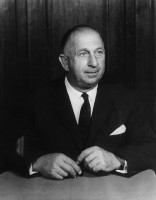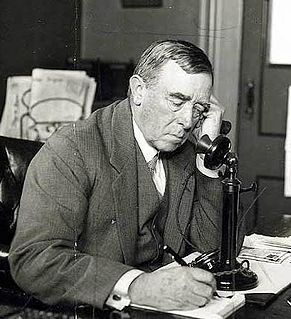| |||||||||||||||||||||||||||||||||||||||||
51 (of the 65) seats in the Victorian Legislative Assembly | |||||||||||||||||||||||||||||||||||||||||
|---|---|---|---|---|---|---|---|---|---|---|---|---|---|---|---|---|---|---|---|---|---|---|---|---|---|---|---|---|---|---|---|---|---|---|---|---|---|---|---|---|---|
| |||||||||||||||||||||||||||||||||||||||||
| |||||||||||||||||||||||||||||||||||||||||
The 1943 Victorian state election was held in the Australian state of Victoria on Saturday 12 June 1943 to elect 65 members of the state's Legislative Assembly.
| |||||||||||||||||||||||||||||||||||||||||
51 (of the 65) seats in the Victorian Legislative Assembly | |||||||||||||||||||||||||||||||||||||||||
|---|---|---|---|---|---|---|---|---|---|---|---|---|---|---|---|---|---|---|---|---|---|---|---|---|---|---|---|---|---|---|---|---|---|---|---|---|---|---|---|---|---|
| |||||||||||||||||||||||||||||||||||||||||
| |||||||||||||||||||||||||||||||||||||||||
The 1943 Victorian state election was held in the Australian state of Victoria on Saturday 12 June 1943 to elect 65 members of the state's Legislative Assembly.
At the time of the election, the Country Party was in the process of repairing a split which had taken place in December 1937 after federal MP John McEwen was expelled from the state branch of the party. The splinter group which supported McEwen had formed the Liberal Country Party on 30 March 1938, which contested the 1940 state election as a separate party. By April 1943, the United Country Party and the Liberal Country Party had formed a joint executive, which had unanimously agreed to reunite the parties. Members of the LCP at the time of the election were endorsed and counted as Victorian Country Party candidates separately from the United Country Party, but the unity agreements meant that their seats were counted for Dunstan's UCP.
Victorian state election, 12 June 1943 [1] [2] | ||||||
|---|---|---|---|---|---|---|
| Enrolled voters | 1,015,750 | |||||
| Votes cast | 883,679 | Turnout | 87.00 | −6.41 | ||
| Informal votes | 22,876 | Informal | 2.59 | +1.03 | ||
| Summary of votes by party | ||||||
| Party | Primary votes | % | Swing | Seats | Change | |
| Labor | 311,051 | 36.13 | +2.96 | 22 | ±0 | |
| United Australia | 198,582 | 23.07 | −12.34 | 13 | −3 | |
| United Country | 112,164 | 13.03 | −1.13 | 18 | −4 | |
| Communist | 38,802 | 4.51 | +4.13 | 0 | ±0 | |
| Victorian Country | 11,738 | 1.36 | −0.98 | 7 | +6 | |
| Independent | 188,466 | 21.89 | +7.36 | 5 | +1 | |
| Total | 860,803 | 65 | ||||
Notes:
The National Party of Australia (NPA), also known as The Nationals or The Nats, is an Australian political party. Traditionally representing graziers, farmers, and regional voters generally, it began as the Australian Country Party (ACP) in 1920 at a federal level. It later adopted the name National Country Party in 1975, before taking its current name in 1982.
A by-election, also known as a special election in the United States and the Philippines, or a bypoll in India, is an election used to fill an office that has become vacant between general elections.

The Liberal–National Coalition, commonly known simply as "the Coalition", is an alliance of centre-right political parties that forms one of the two major groupings in Australian federal politics. The two partners in the Coalition are the Liberal Party of Australia and the National Party of Australia. Its main opponent is the Australian Labor Party (ALP); the two forces are often regarded as operating in a two-party system. The Coalition has been in government since the 2013 federal election, most recently being re-elected in the 2019 Australian federal election. The group is led by Scott Morrison as Prime Minister of Australia since August 2018.

The Liberal National Party of Queensland (LNP) is a major political party in Queensland, Australia. It was formed in 2008 by a merger of the Queensland divisions of the Liberal Party and the National Party. At a federal level and in most other states, the two parties remain distinct and operate as a Coalition. The LNP is a division of the Liberal Party of Australia, and an affiliate of the National Party of Australia.

Edmond John "Ned" Hogan was an Australian politician who was the 30th Premier of Victoria. He was born in Wallace, Victoria, where his Irish-born parents were small farmers. After attending a Roman Catholic primary school, he became a farm worker and then a timber worker, and spent some time on the goldfields of Western Australia.

The 1963 Australian federal election was held in Australia on 30 November 1963. All 122 seats in the House of Representatives were up for election. The incumbent Liberal–Country coalition government, led by Prime Minister Sir Robert Menzies, won an increased majority over the opposition Labor Party, led by Arthur Calwell. This was the only time that a Federal Government won a seventh consecutive term in office.

Thomas Tuke Hollway was the 36th Premier of Victoria, and the first to be born in the 20th century. He held office from 1947 to 1950, and again for a short period in 1952. He was originally a member and the leader of the United Australia Party (UAP) in Victoria, and was the inaugural leader of the UAP's successor, the Victorian division of the Liberal Party, but split from the Liberals after a dispute over electoral reform issues.

The 1999 Victorian state election, held on Saturday, 18 September 1999, was for the 54th Parliament of Victoria. It was held in the Australian state of Victoria to elect the 88 members of the state's Legislative Assembly and 22 members of the 44-member Legislative Council. The Liberal–National Coalition led by Jeff Kennett and Pat McNamara, which had held majority government since the 1996 election, lost 15 seats and its majority due mainly to a swing against it in rural and regional Victoria.
The Victorian Farmers' Union (VFU) was an association of farmers and primary producers formed in 1914 in the Australian state of Victoria. Although initially formed as an "absolutely non-political" entity, the VFU became a political party in 1916, and nominated candidates for the 1917 state election and subsequent elections. In later years it used the names Victorian Country Party, then United Country Party and is now the National Party of Australia – Victoria. At the 1917 election, because the support for the VFU was concentrated in rural seats, it won four of the 11 seats in the Victorian Legislative Assembly it contested, gaining about 6% of the vote state-wide. In 1918 it also won its first seat in the federal parliament, after preferential voting was introduced. At the 1920 state election the VFU vote increased to 8% and the number of seats to 13, giving the VFU the balance of power in the state Legislative Assembly.
This article provides information on candidates who stood for the 1940 Australian federal election. The election was held on 21 September 1940.

The 1944 New South Wales state election was held on 27 May 1944. It was conducted in single member constituencies with compulsory preferential voting and was held on boundaries created at a 1940 redistribution. The election was for all of the 90 seats in the Legislative Assembly.
William Lionel Moss CBE was an Australian grazier who served as federal president of the Australian Country Party from 1962 to 1968.

The 1955 Victorian state election was held in the Australian state of Victoria on Saturday 28 May 1955 to elect 65 members of the state's Legislative Assembly.

The 1935 Victorian state election was held in the Australian state of Victoria on Saturday 2 March 1935 to elect 53 of the 65 members of the state's Legislative Assembly. 12 seats were uncontested.

The 1932 Victorian state election was held in the Australian state of Victoria on Saturday 14 May 1932 to elect 44 of the 65 members of the state's Legislative Assembly. The other 21 seats were uncontested.

The 1917 Victorian state election was held in the Australian state of Victoria on Thursday 15 November 1917 for the state's Legislative Assembly. 51 of the 65 Legislative Assembly seats were contested.

The National Party of Australia – Victoria is a political party in Victoria, which forms the state branch of the federal Nationals. Traditionally representing graziers, farmers and rural voters generally. The Victorian Farmer's Union formed in 1914 was the precursor to the Victorian Country Party, later the Nationals.
The Australian Labor Party , commonly known as Victorian Labor, is the semi-autonomous Victorian branch of the Australian Labor Party (ALP). The Victorian branch comprises two major wings: the parliamentary wing and the organisational wing. The parliamentary wing comprising all elected party members in the Legislative Assembly and Legislative Council, which when they meet collectively constitute the party caucus. The parliamentary leader is elected from and by the caucus, and party factions have a strong influence in the election of the leader. The leader's position is dependent on the continuing support of the caucus and the leader may be deposed by failing to win a vote of confidence of parliamentary members. By convention, the premier sits in the Legislative Assembly, and is the leader of the party controlling a majority in that house. The party leader also typically is a member of the Assembly, though this is not a strict party constitutional requirement.

The Liberal Party of Australia , branded as Liberal Victoria, and commonly known as the Victorian Liberals, is the state division of the Liberal Party of Australia in Victoria. It was formed in 1949 as the Liberal and Country Party (LCP), and simplified its name to the Liberal Party in 1965.

The Liberal Party of Australia , branded as Liberal Western Australia, is the division of the Liberal Party of Australia in Western Australia. Founded in March 1949 as the Liberal and Country League of Western Australia (LCL), it simplified its name to the Liberal Party in 1968.